Last Updated on: 5th August 2024, 11:33 am
Despite its gargantuan size, the Chronicle of Georgia monument remains off the radar for many Tbilisi visitors and residents alike. The modern art piece, created by renowned Georgian/Russian artist Zurab Tsereteli, is an homage to Georgia’s long and storied history.
The huge monument consists of 16 columns towering at 35 meters high. Photographs fail to capture just how massive the work really is, so an in-person visit is a must.
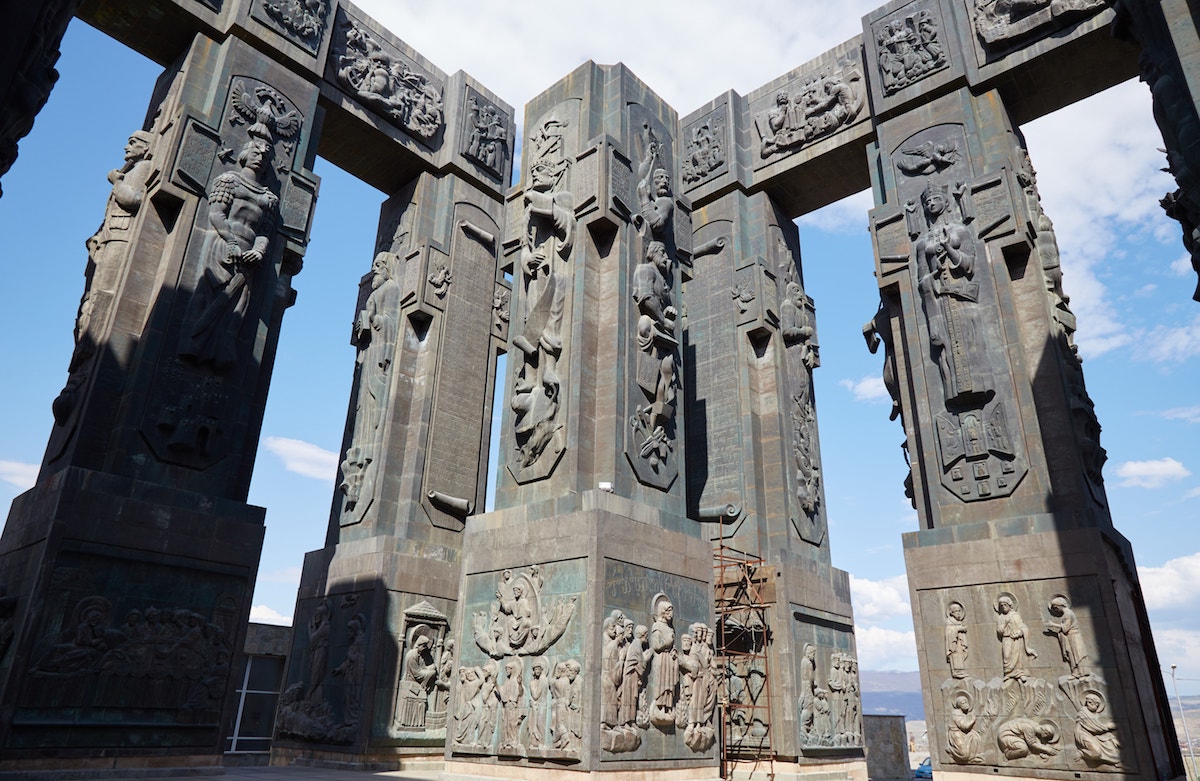
What is the Chronicle of Georgia?
Zurab Tsereteli started working on the Chronicle of Georgia back in 1985. But it’s still not quite finished, with progress having been halted at around 90%.
The columns seem to have been built with cores of stone blocks. Each column was then covered with humongous yet intricately detailed pieces of bronze.

The monument is obviously an homage to Georgia’s history and culture. But finding information in English beyond that yields almost no results. English signage is lacking at the site, and the meanings behind much of the imagery remain unclear.
But that doesn’t matter. You’ll be so blown away by the sheer size of it all that you won’t be worrying much about each little detail.
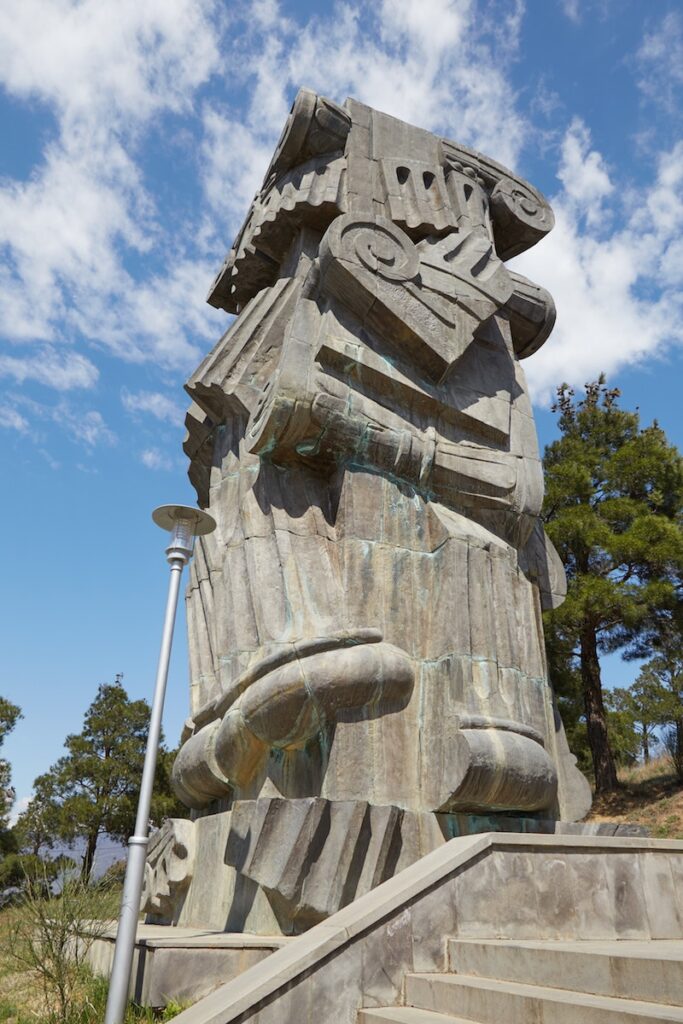

As mentioned above, the place is not all that well-known. But word is gradually getting out. While reviews from a few years back mention a total lack of visitors, there was a steady flow of people coming in and out during both of my visits.
The Middle Pillars
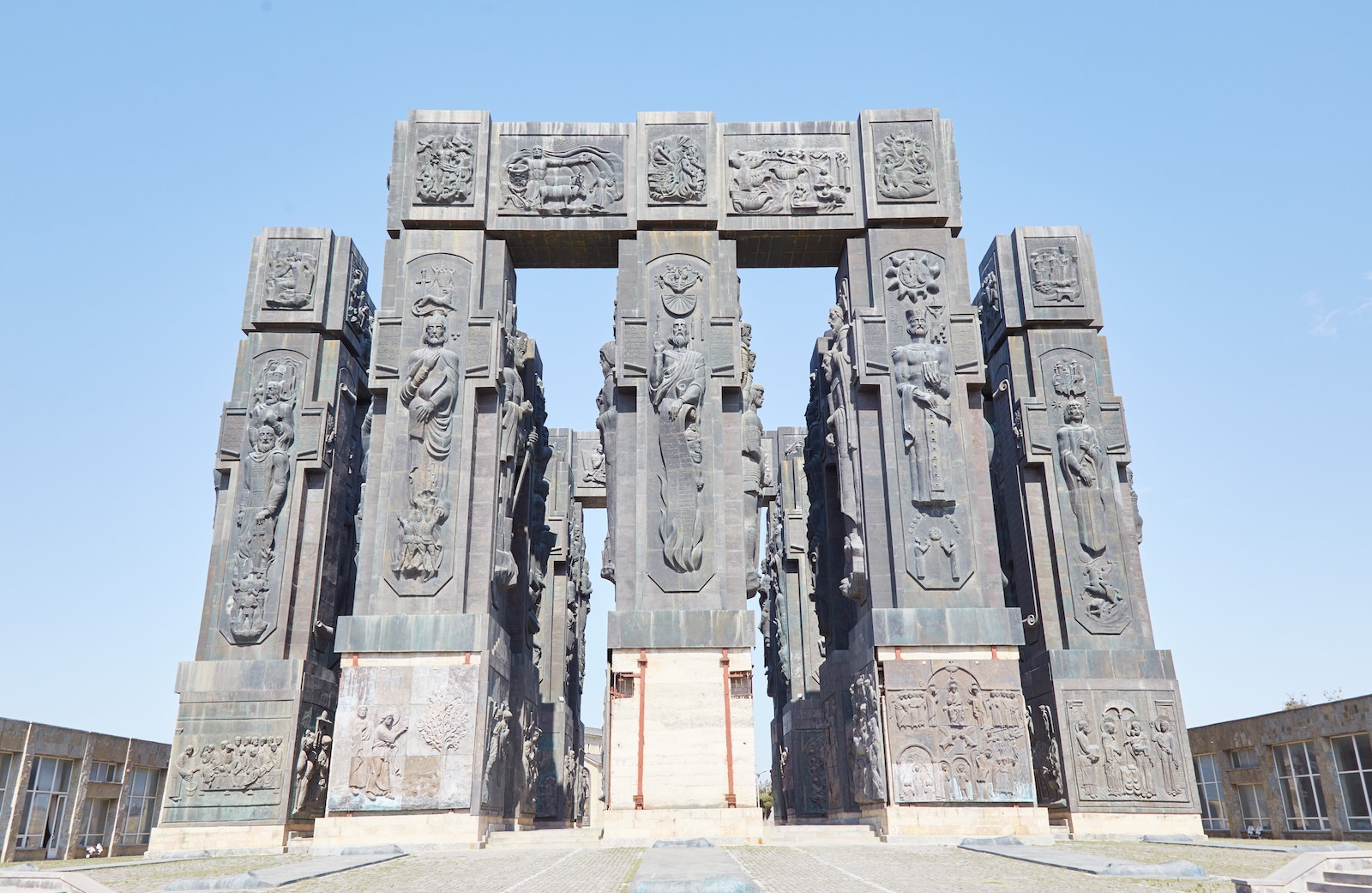
Once you get over the awesome scale of the monument, you’ll notice that the art is divided into three distinct sections. And the middle and largest section pays tribute to the most legendary rulers from Georgian history.
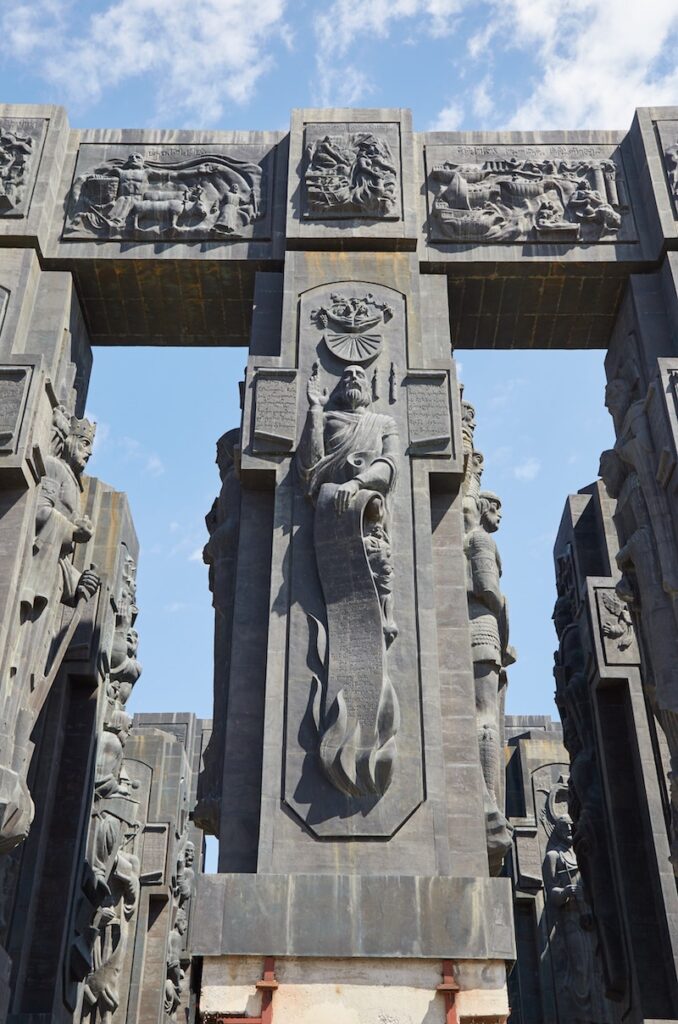


Befitting of its name, the monument features numerous depictions of scrolls resembling ancient historical chronicles. But as they’re all in the Georgian language, the identity of each ruler is totally lost on most foreign visitors.
I visited the Chronicle of Georgia twice – once shortly after my arrival in the country, and later after having visited most of Georgia’s prominent landmarks. But despite being armed with a much deeper knowledge of important Georgian historical figures, I had a very hard time guessing who was who.
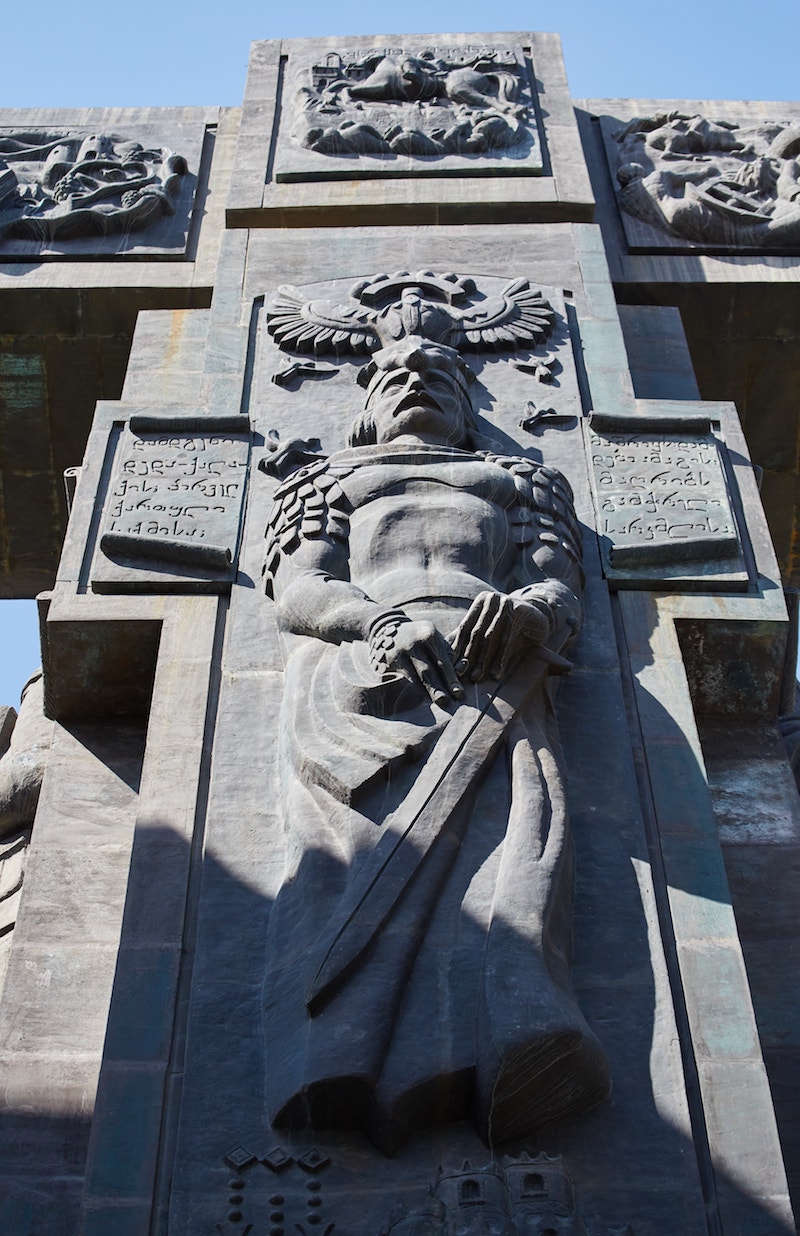

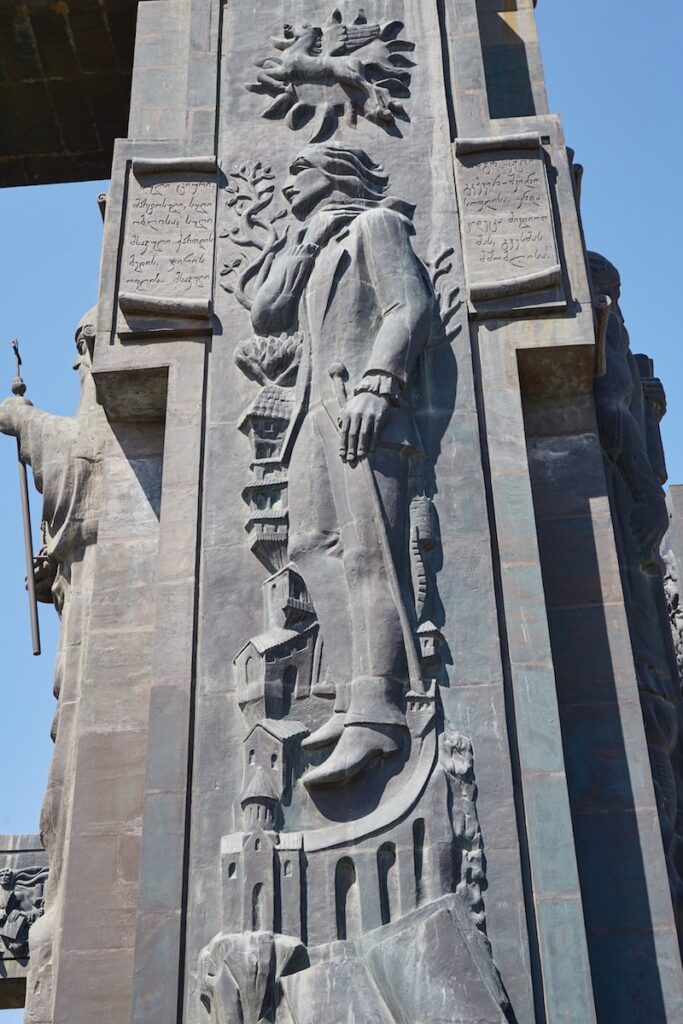
The only obvious answer is Queen Tamar, one of Georgia’s most legendary rulers who also happened to be a woman.
I can presume that other significant monarchs, like David the Builder and Vakhtang, Tbilisi’s founder, are depicted somewhere among the columns as well. I just can’t say exactly where!
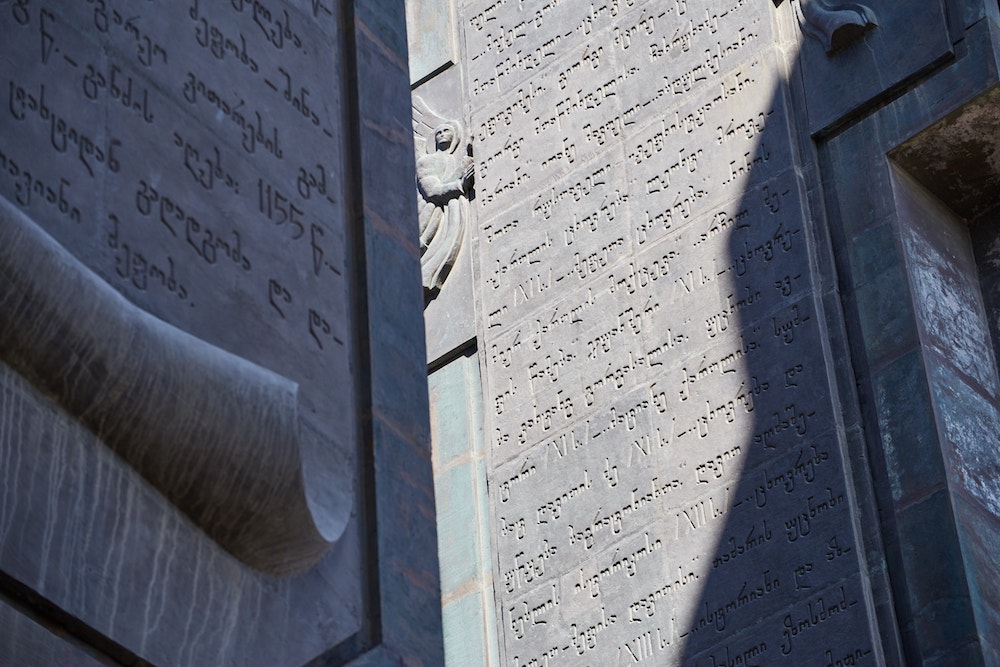

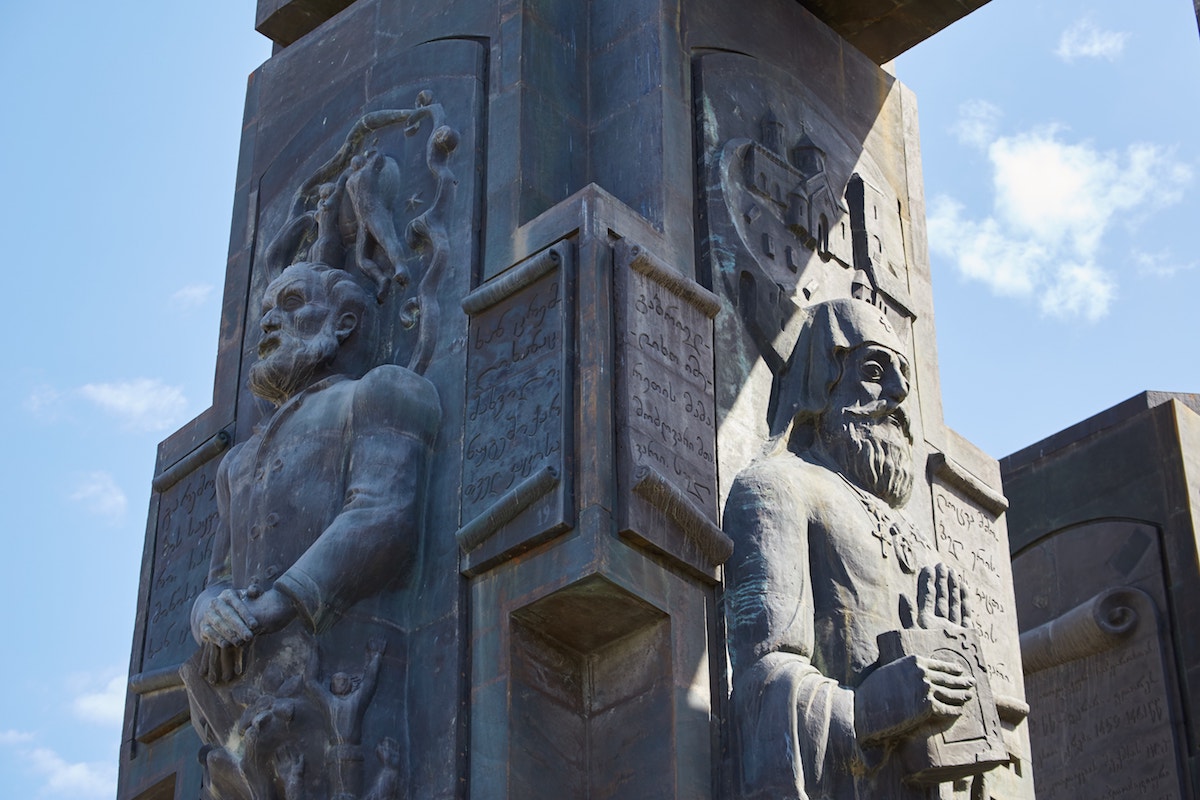
Upon closer inspection, some of the characters also appear to be patriarchs of the Georgian Orthodox Church, so maybe not all of the figures here are monarchs.
Hopefully, someday they can put up an informational signboard to let foreign guests know exactly who and what they’re looking at.

The Top Sections
The very top of the columns depict scenes of important events from Georgia’s history. Given how high up they are, they’re nearly impossible to appreciate from the ground.
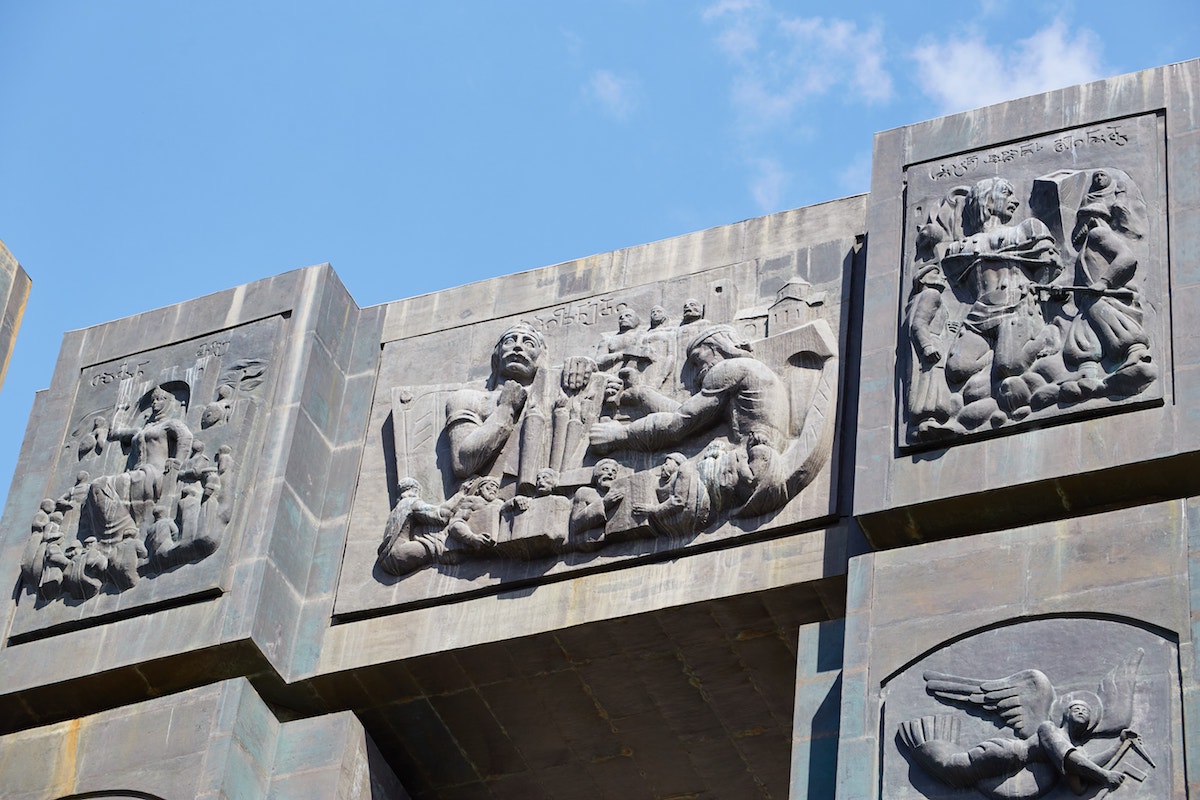
I made sure to come with a zoom lens to capture them. But despite my efforts, it’s hard to guess exactly which events they represent. Nonetheless, it’s amazing how much detail was put into these bronze-cast scenes that most visitors can hardly even see.
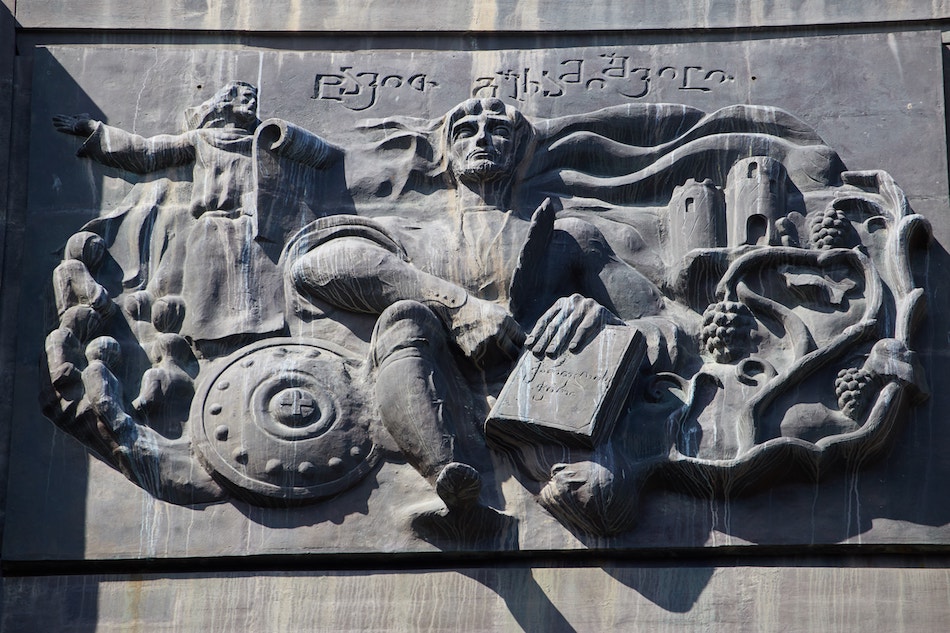
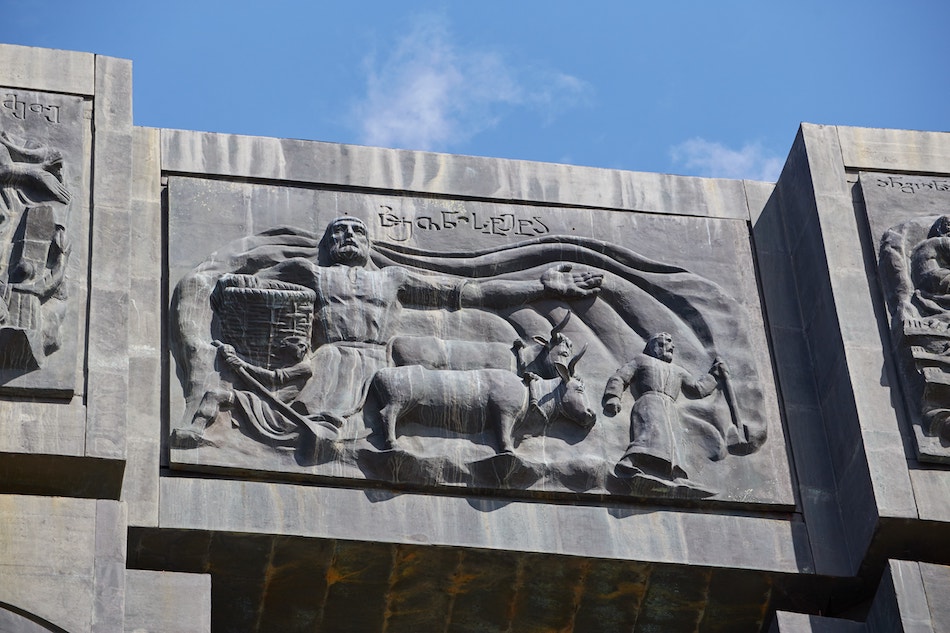

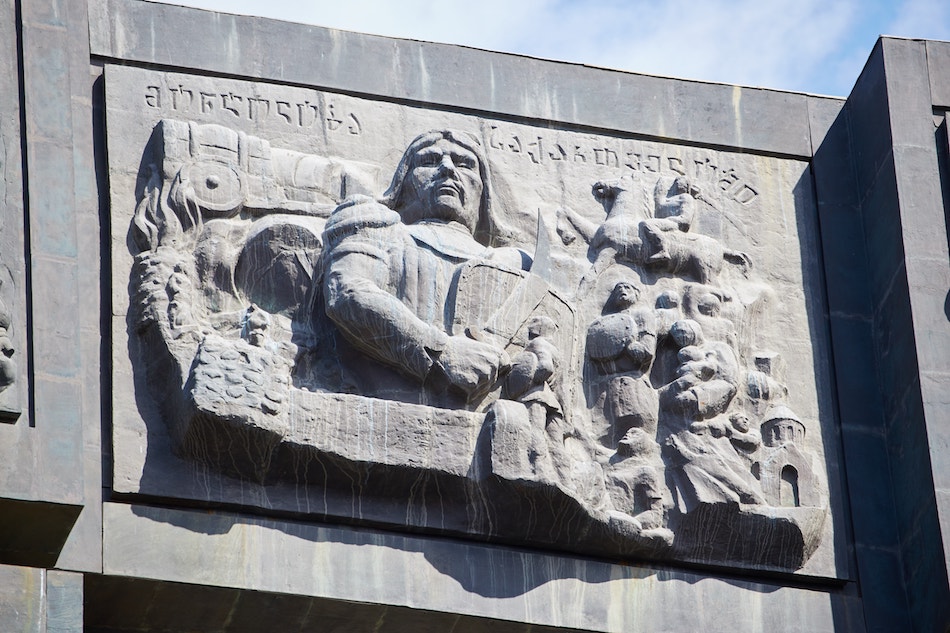
The Bottom Sections
The bottoms of the pillars are entirely dedicated to scenes from the New Testament. As such, anyone familiar with the Bible – Georgian or not – will have a pretty good idea of what each square signifies.


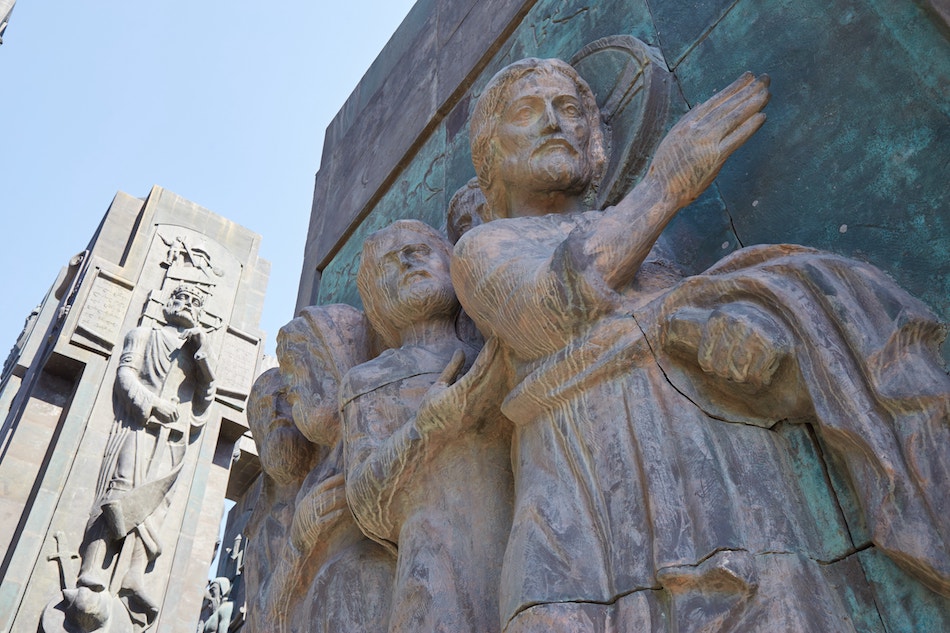
Georgia was one of the world’s first countries to adopt Christianity as its national religion. Christianity, therefore, has been strongly linked with the country’s national identity since as far back as the 4th century.
The placement of the Jesus imagery down at the base is likely Tsereteli’s way of saying that Christianity is foundational to Georgian culture and history.
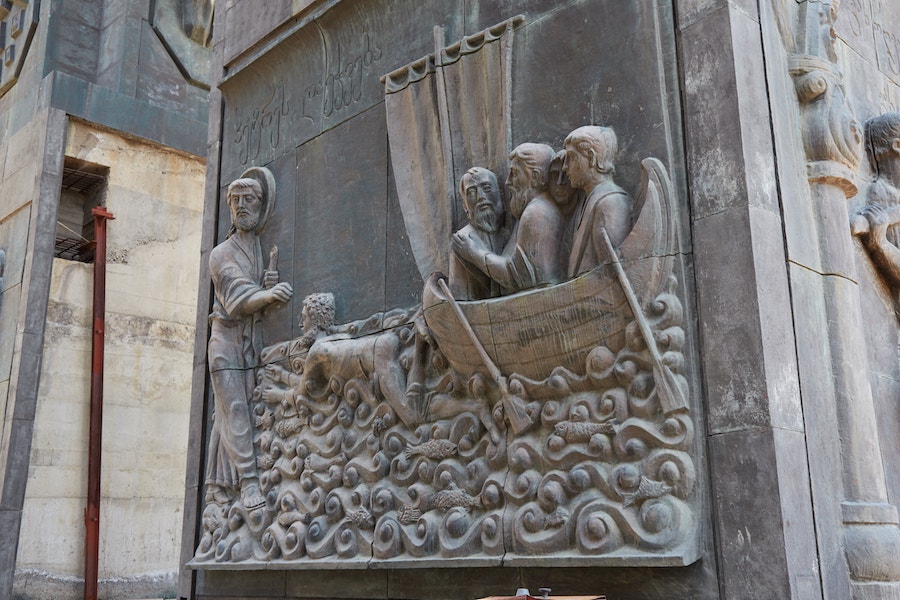




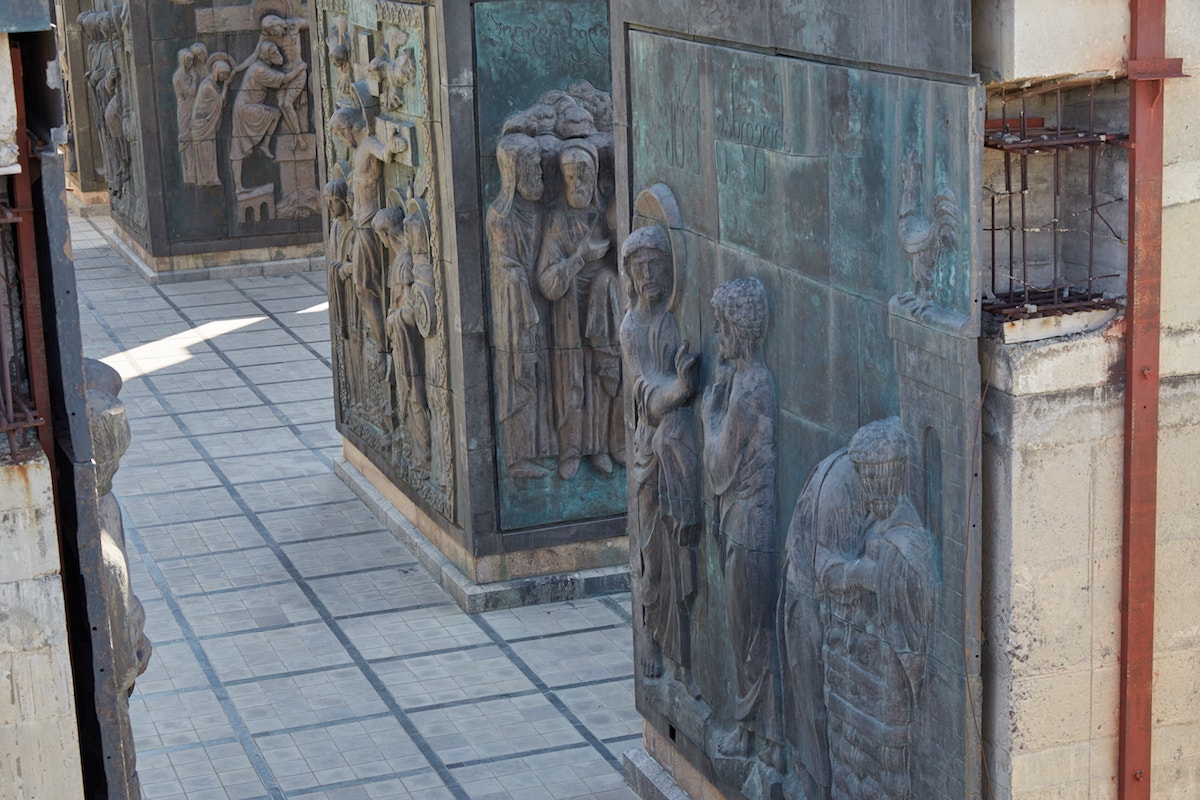
The Church & View
On that note, having a church on site feels rather appropriate. From the side, the small structure resembles your typical traditional Georgian church.
The front, however, is adorned with bronze plating in the style of the main monument. And it appears to depict famous churches found throughout the country.


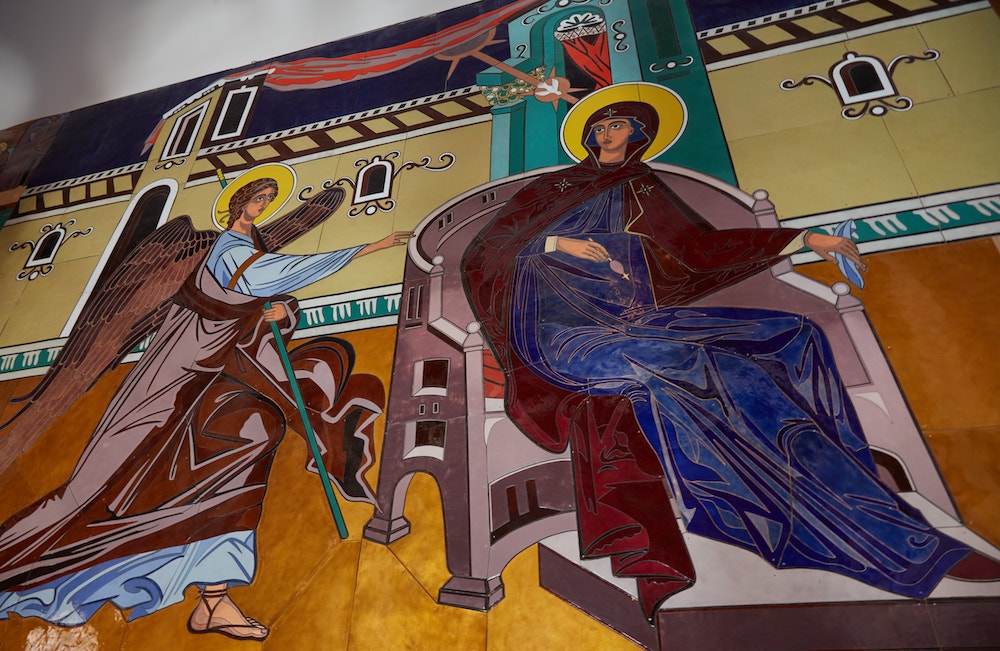
Inside, the colorful frescoes were done in a much more traditional manner. They were still in the process of being painted during my first visit. Hoping to see the progress upon my return, I found the interior to be locked.


During your visit, also take the opportunity to enjoy the views. On one side you can see the massive Tbilisi Sea reservoir – a popular summer swimming spot.
And on the other side is, well, a somewhat depressing view of Tbilisi’s nondescript Soviet-era apartment blocks.

Speaking of views, the Chronicle of Georgia itself is visible from much of northern Tbilisi.
I was based in a few different neighborhoods during my extended stay in the city. Fed up with the city center, I ended up moving to the Dighomi district before my eventual departure. I had a clear view of the Chronicle of Georgia from my balcony, and found that it even lights up at night!
Zurab Tsereteli Museum of Modern Art
Fascinated with the Chronicle of Georgia monument, I headed over to the Museum of Modern Art on Tbilisi’s main avenue, Rustaveli. This isn’t your typical modern art museum, as it only features the work of a single artist: Zurab Tsereteli.

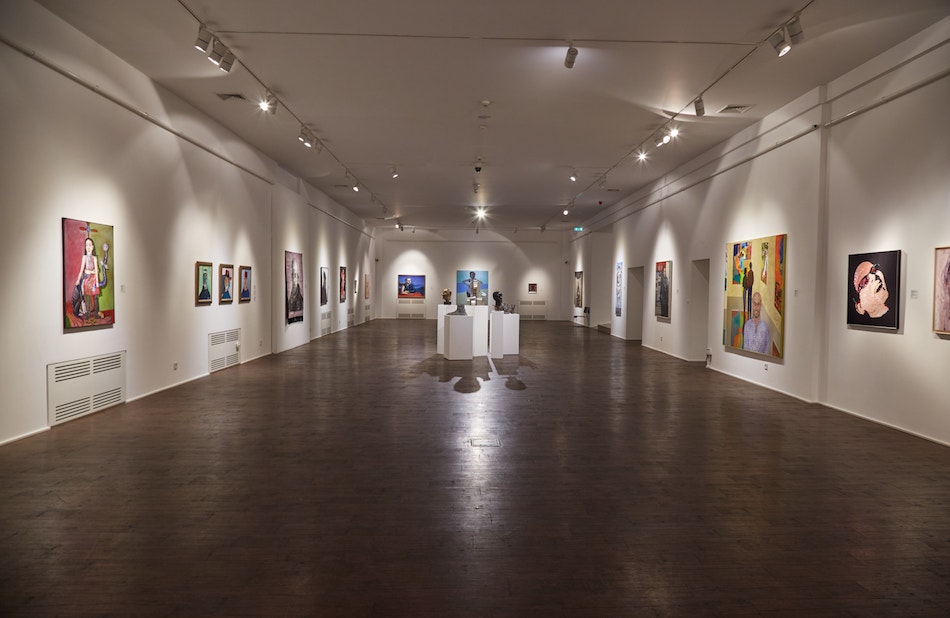

The multistory museum contains a wide array of both paintings and sculptures by the prominent artist. But it wasn’t quite what I was expecting.
Personally speaking, Tsereteli’s paintings and individual sculptures don’t do much for me. While there are some larger and more abstracts pieces just outside, you won’t find anything on the level of the Chronicle of Georgia here.
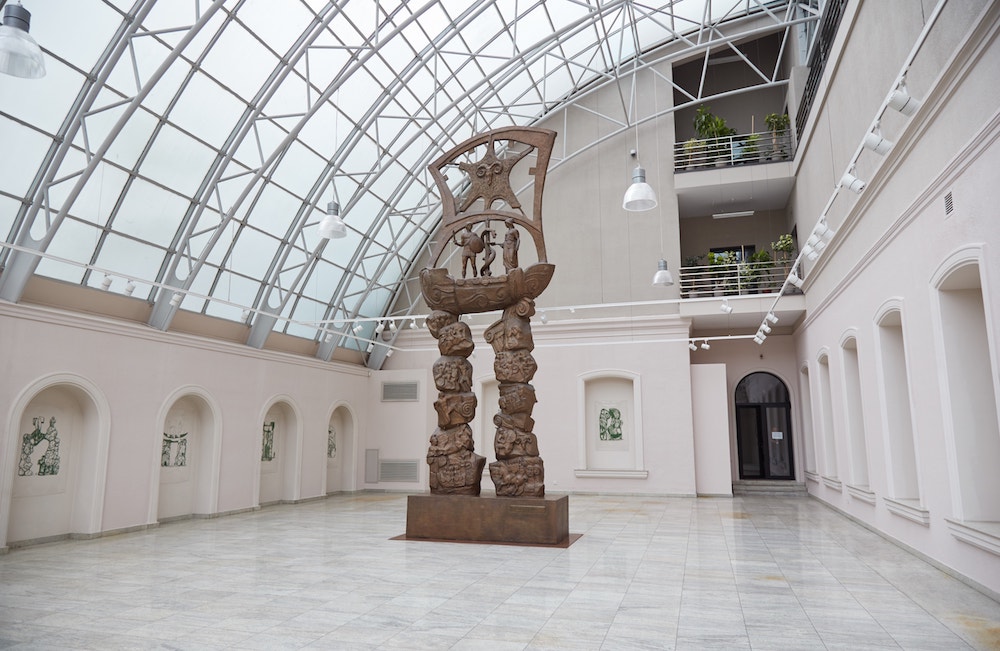
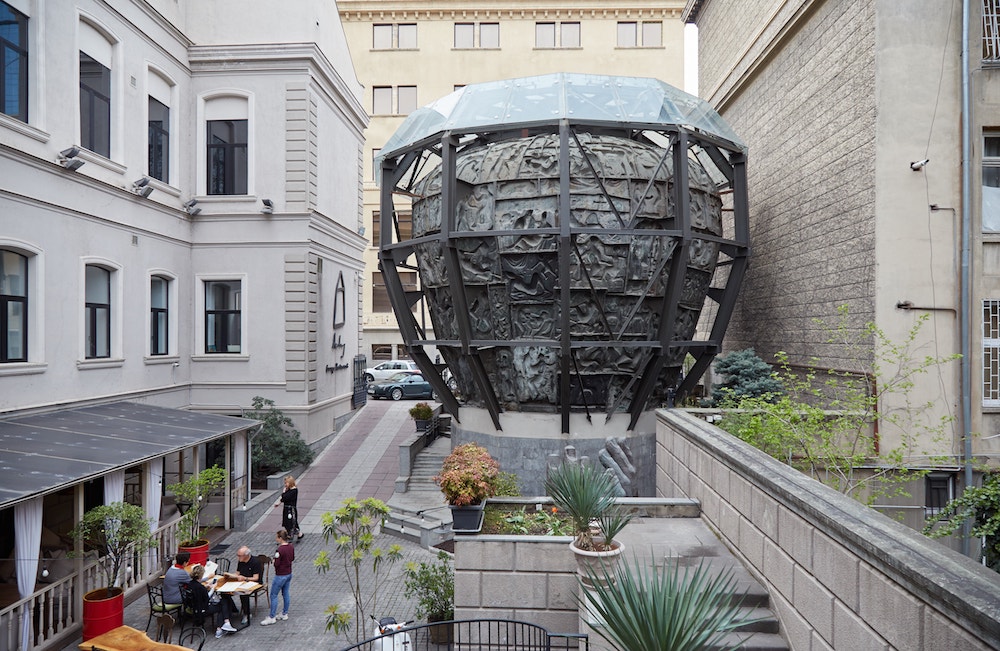
Outside of Tbilisi, his other significant works can be found in places like Moscow, Puerto Rico and New Jersey. Sadly for Tsereteli, some of his projects routinely appear on lists of the ‘World’s Ugliest Statues.’
Be that as it may, Tsereteli has some admirers in high places. In the 1990s, Donald Trump of all people praised his work. And the museum also features photos of the artist together with numerous world leaders, including the Clintons.
The Chronicle of Georgia is arguably Tsereteli’s most important and also most well-received work. And hopefully, it’s not long before the chronicle is fully complete.
Additional Info
Despite Georgia being such a small country, Tbilisi is a bigger city than most would expect, and visitors have a number of neighborhoods to choose from within the city center.
Many tourists choose to stay in the Old Tbilisi area, and for good reason. As mentioned in the Old Tbilisi guide above, the area (which consists of a few different neighborhoods like Avlabari and Sololaki) is home to many prominent landmarks. And it’s also a quick walk to Liberty Square.
Many visitors also base themselves near Liberty Square and along Rustaveli Avenue. This area would also give you access to some of Tbilisi’s most notable architecture, such as the Parliament Building, along with numerous museums. Furthermore, the bus to David Gareja departs from Pushkin Square, just next to Liberty Square.
Further north, on the eastern side of the river, Marjanishvili is another popular area. From here you can easily walk to Agmashenebeli Avenue, known for its architecture and restaurants. Also nearby is Fabrika, a unique multipurpose space which features a hostel, art spaces, bars and restaurants.
An increasing number of visitors are also basing themselves in the city longer term. In that case, you should also consider the Vera and Saburtalo neighborhoods. If you’re craving more greenery, the Dighomi district is also worth considering for longer stays, especially somewhere nearby the forest-like Dighomi Park.
Many Tbilisi residents and expats alike recommend the Vake district. While it may have some trendy cafes and Vake Park, it’s the one neighborhood in central Tbilisi with no metro access. Furthermore, the neighborhood is very hilly and with bad traffic problems.
The Chronicle of Georgia lies northeast of central Tbilisi, and walking there is not a realistic option from most districts. The easiest way to get there would be to use the Bolt or Yandex ridesharing apps, which are efficient and incredibly affordable in Tbilisi.
Unless you strike a deal with your driver (who likely won’t speak English) to wait for you and then take you back, you may have a hard time finding a driver on the hilltop to take you home. If that’s the case, your only option is to walk 40 minutes or so to the nearest metro station, Ghrmaghele.
(Actually, there are a couple others roughly an equal distance away, but Ghrmaghele seems to be the easiest to walk to and from.)
You will have to walk alongside the highway for awhile, but you can use a small forest path over to the side for most of the journey. Eventually, turn right on Mukhrani street and head straight through this relatively quiet Tbilisi suburb. Then walk straight ahead for another 20 minutes or so before you eventually see signs for the metro.
